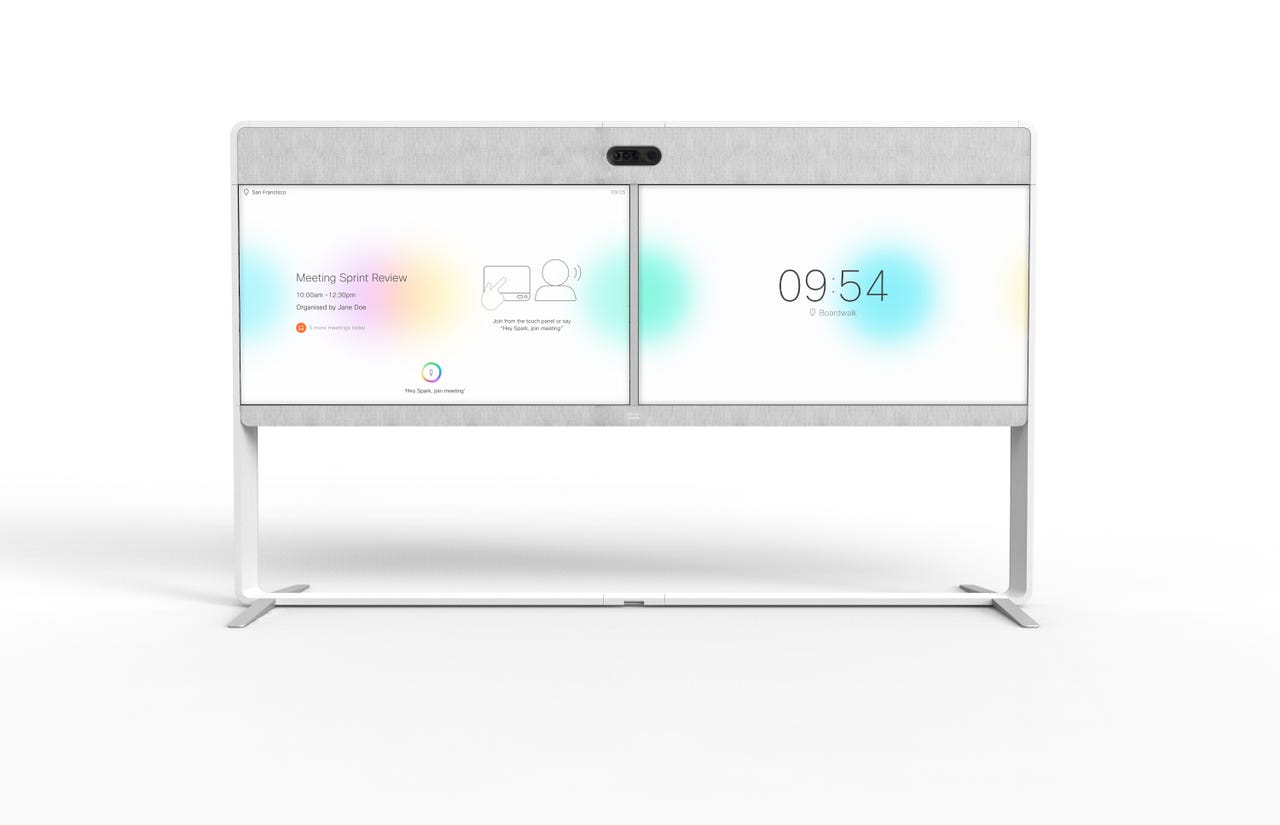Cisco debuts the first voice-activated assistant built just for meetings


AI-enabled virtual assistants are becoming increasingly common, but most use cases so far have focused largely on the consumer space. Cisco is looking to change that with the Cisco Spark Assistant, which it said is the first voice assistant purpose-built for meetings and collaboration.
"The capabilities supported by [voice assistants] are defining the winners and losers in the smartphone space, in the connected device space in your home," Cisco's Timothy Tuttle told ZDNet. "Cisco believes the same thing will happen in the enterprise space, and the first place it's going to happen is around meetings and collaboration."
While open platforms like Amazon's Alexa allow third-party developers to build enterprise-focused functionalities for their assistants, "no company has yet been successful in launching a version of a voice assistant that will be truly useful in the enterprise," Tuttle said. "Spark Assistant, we believe, will be the first assistant that will get widespread enterprise use."
Starting early next year, the Spark Assistant will be available to a small group of customers using select features. The assistant will first be available on Cisco Spark Room Series endpoints and will eventually be available on all of Cisco's conference room devices, as well as mobile and desktop clients.
The Spark Assistant was borne out of Cisco's acquisition of MindMeld, a company founded by Tuttle that was one of the early pioneers in conversational AI technology. It relies on speech recognition technology, natural language understanding, question answering and dialogue management, as well as Cisco's deep knowledge of the collaboration space.
Its initial skills will enable a user to start a meeting (with a handful of phrases like, "Hey Spark, Join the meeting"), join a WebEx personal meeting room, call anyone in the company directory, or control a Spark device (with phrases like, "Hey Spark, record this meeting").
The Spark Assistant is triggered by the phrase, "Hey Spark," which Tuttle said has one of the best "wake word" reliability rates among voice-activated assistants -- a factor he said is more important in an enterprise setting.
Thanks to its integration with Cisco Spark hardware, the assistant also takes advantage of Spark hardware features such as Intelligent Proximity, which enables a device to determine who is present in a conference room. Proximity can help users securely and quickly move through a meeting. For instance, an employee could join their Spark personal meeting room via the Spark Assistant without having to authenticate into a shared meeting room device.
Until a user is authenticated with Intelligent Proximity, Spark Assistant will only offer access to shared resources like a company directory. In the future, Spark Assistant will also authenticate users through a device's facial recognition capabilities or speaker identification.
Read also: Cisco rolls out new storage networking telemetry capabilities | Cisco, Google Cloud forge hybrid cloud partnership: Here's why they need each other | Cisco and Google partner on new hybrid-cloud approach: Goodzilla
Eventually, the Spark Assistant will have further capabilities like taking action items, crafting and sending meeting summaries, and assisting with planning and scheduling. Tuttle said Spark Assistant is "laser focused" on collaboration functionality.
"We are not going down the path of trying to make a general purpose, consumer assistant," he said. "If you want to ask about the weather or stock prices, everyone has one in their pocket already that will do a decent job of that."
Eventually, the Spark Assistant will be extensible, enabling enterprises to make adjustments and enhancements. For now, though, Cisco is prioritizing the core skills available. On the consumer side, Tuttle argued, "developers still struggle creating useful skills that can be deployed on Alexa, and most end users still rely on core skills that Amazon builds themselves."
"Right now, while Alexa and the other platforms to some extent are designed to be open developer ecosystems that can be adapted for the enterprise, no one has really succeeded in doing that in any real way," he said.